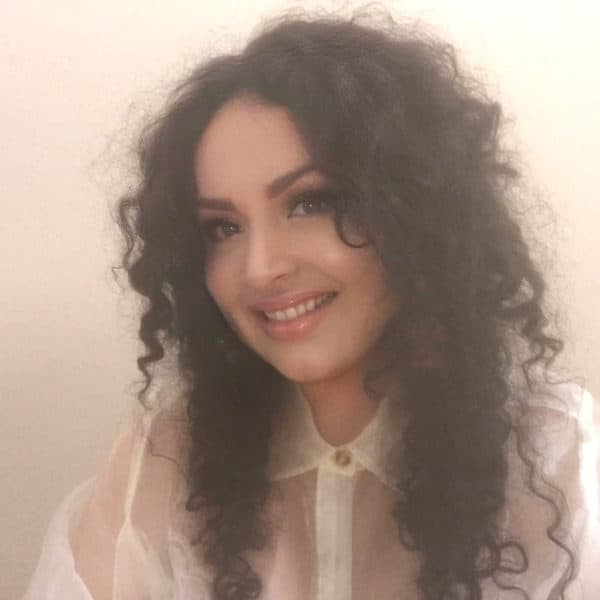Advertisement
From The Editor
2019 In Boston Arts: A Year Of Convening
ResumeThere is much to be said about solitude: that sometimes it's necessary, that it's the place from which creative expression can blossom, untethered to the gaze of others. But equally necessary, and seemingly ubiquitous to me this year in Boston's arts and culture scene, is the pull to gather.
In 2019, I thought a lot about the way people come together in a space, claim or reclaim it for themselves and the fellowship or tension that may arise from this physical, or sometimes metaphorical gathering. It seemed to me, that everywhere I turned in the creative world, there was a hunger, or at least a confrontation with, the idea of convening.
There are obvious examples. Violist Rayna Yun Chou and Celebrity Series of Boston held 5,000 performances with 58 musicians who played one minute of a song for strangers. Dubbed "Concert For One," the musician and the stranger sat face-to-face inside of small shipping containers set up in Chinatown and Cambridge. "Both people are vulnerable, the openness really moves you,” Yun Chou told us about the intimate performances during which strangers convened.
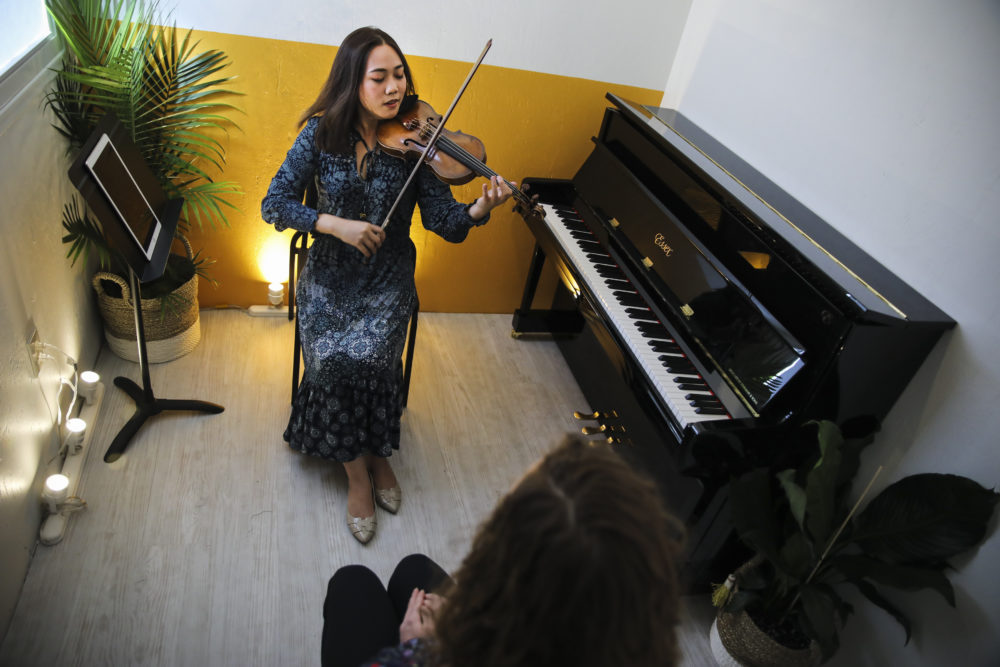
Then there's public art presenter Now + There's collaboration with art world darling Nick Cave for a joy-themed procession through the city with massive sculptures made of inflatable lawn ornaments. The project, titled "Augment," gathered folks for more than a dozen workshops to explore what sparked joy for them and to express it by parading through the streets.
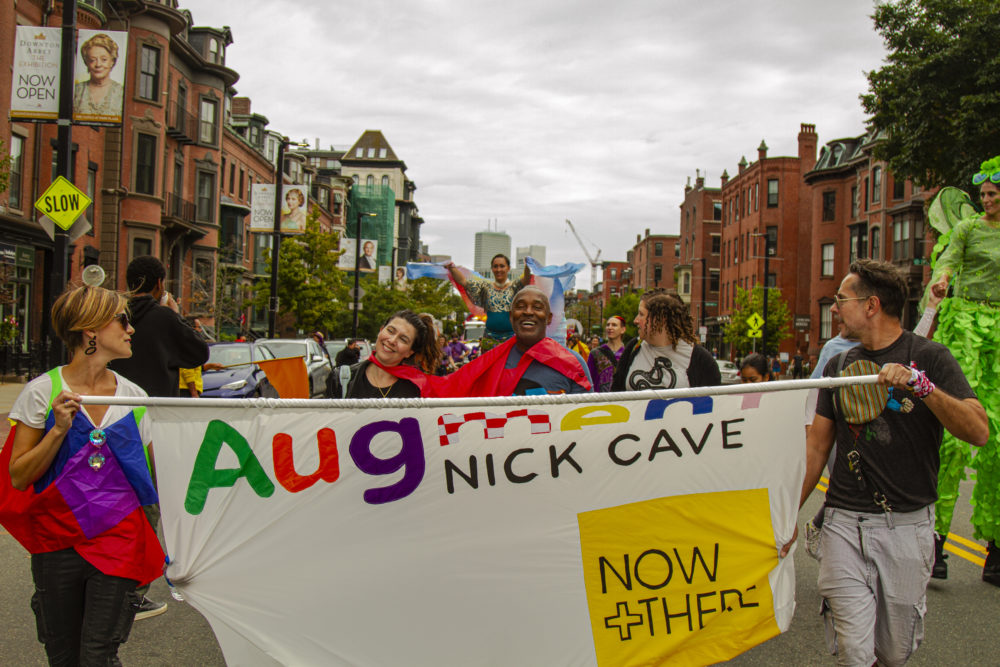
The Institute of Contemporary Art's highly anticipated and virally documented acquisition of Yayoi Kusama largest infinity room had us convene with others inside the mirrored, brightly-colored tentacled room as a poem from Kusama blared from speakers. There, we were transported to a tactile universe of polka dots and a vastness outside of ourselves. Part of the fun of the room is its experiential nature that's conducive to sharing with others. I, of course, posted a selfie on the 'gram. The proliferation of Kusama's infinity mirror images on social media also convened us online.
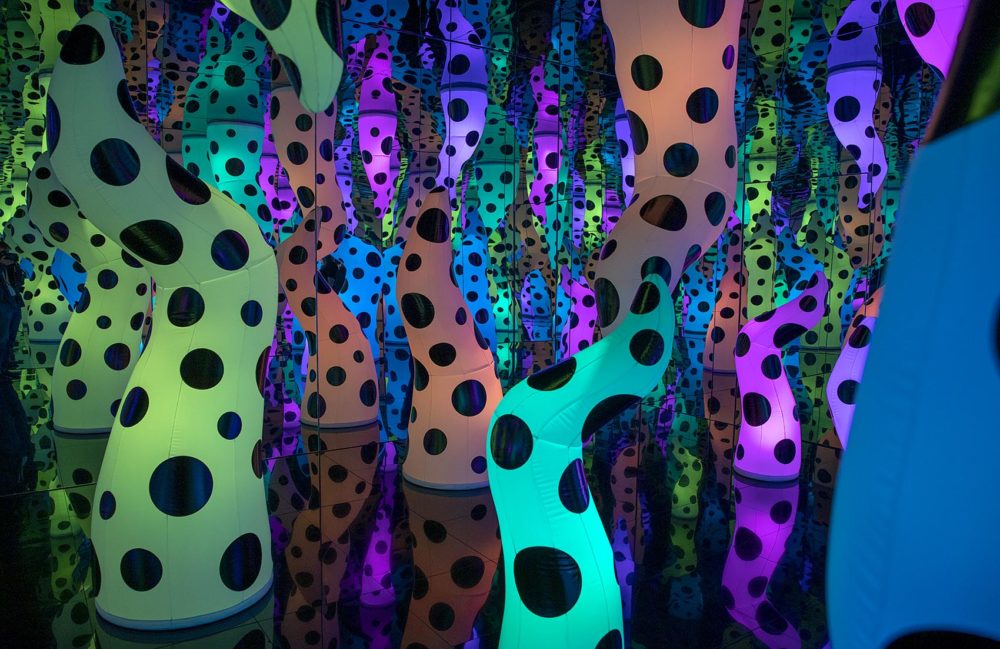
Artist Pat Falco asked us to consider how we've historically convened in our homes and in our neighborhoods through "MOCK," two adjacent walls in the Seaport meant to evoke New England's triple-deckers that once made home-ownership (albeit mostly for white folks) a possibility. But eventually, anti-immigrant and anti-poor regulations prevented the creation of new triple-deckers. The development of new neighborhoods we see popping up today (like the Seaport) have a much different feel.
Seeing Falco's installation (also presented by Now + There) in the swanky, homogeneous Seaport made me think of how we convene in our communities and how the neighborhoods we inhabit formed their identities. Why do we feel a sense of belonging, a right to be somewhere, a welcoming feeling in some public spaces and not in others?
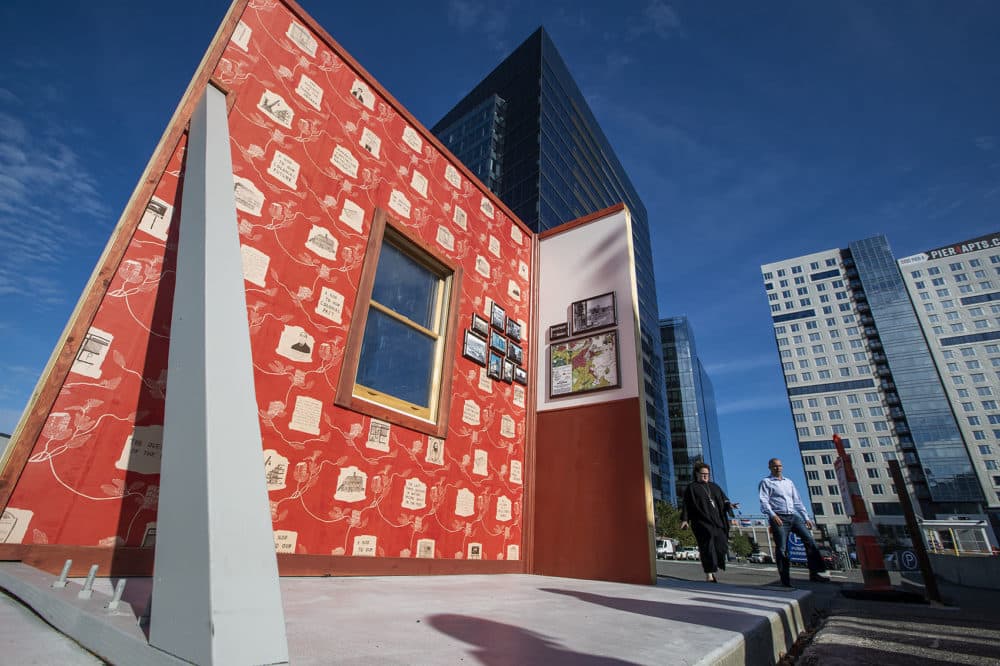
That's a question that the Museum of Fine Arts grappled intensely with this year. Through its programming, the encyclopedic museum has convened audiences who have historically been excluded from its walls. Its "Gender Bending Fashion" exhibition included a vivid digital photo album with queer and transgender Bostonians. Shows centered on artists like Mexican photographer Graciela Iturbide and Frida Kahlo were presented with curatorial heft and rigorous aesthetic analysis. But what drew me in was the cadence with which these shows were publicly introduced — using Spanglish, focused on the cultural and artistic lineage of the artists rather than the popular, diminishing narratives. When I was reporting on the Kahlo exhibition, the curator told me that a cafe employee at the MFA had never gone into a gallery until that show opened.
And yet in May, black and brown children from the Helen Y. Davis Leadership Academy were called "F----- black kids" by another visitor, were profiled by guards, they say, and one girl was told to focus on the art rather than stripping when she danced at the "Gender Bending Fashion" exhibition. The museum revoked the membership of the patron who made the racist comment, launched an internal review of its practices and revamped its welcome for student groups.
But I still wonder, will those children ever be moved to convene at the MFA again? Why, when we convene in a public space that should belong to all us, do some people feel entitled to shun others? Can these spaces truly be decolonized? What would it look like for a cultural institution to truly cultivate an inclusive space to convene?
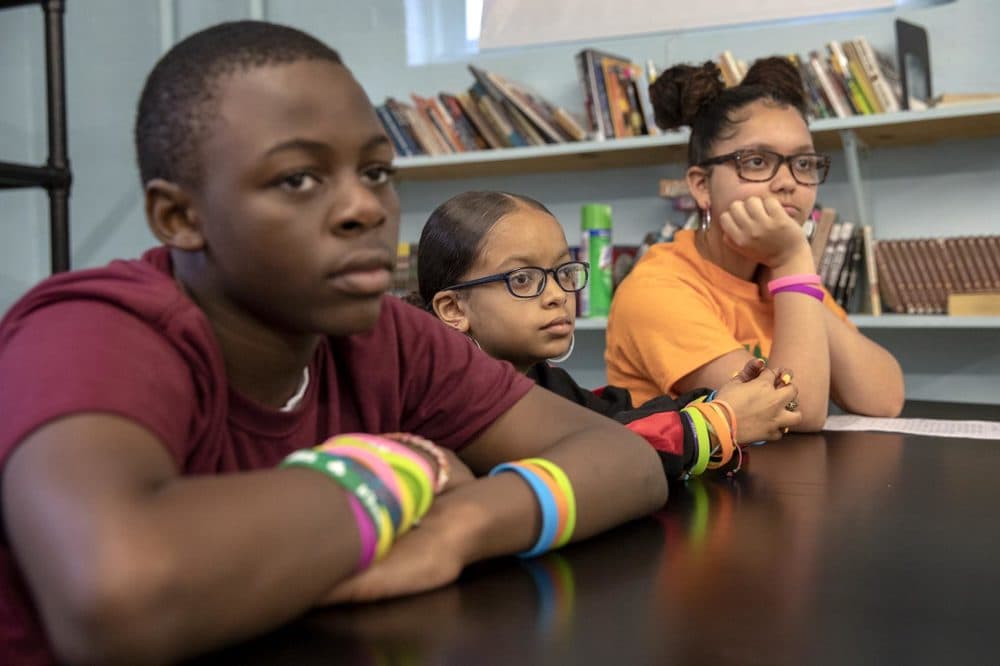
We may have a glimpse of that with the Boston Music Awards. Once known for feeling out of touch with wider music trends and being rather insular, this year's awards, Brendan McGuirk wrote, felt, sounded and looked different than it ever had before — in large part because of the proliferation of hip-hop and R&B that's flourishing in the city. Nearly two years after my colleague Amelia Mason's deep look into the hostility toward hip-hop in Boston, the writer and critic Dart Adams, in a panel this month at WBUR, said he finally saw tangible, measurable progress in the way the city embraces the genre.
While some community movements are burgeoning, others have eroded this year. The Boston's Children's Theatre — the oldest in the country — went bankrupt after concerns of financial mismanagement and the controversial and sudden departure of its artistic director. What happens when children lose their source of convening with other like-minded aspiring artists? As Cristela Guerra reported, for many of them, the loss also feels like violation of trust.
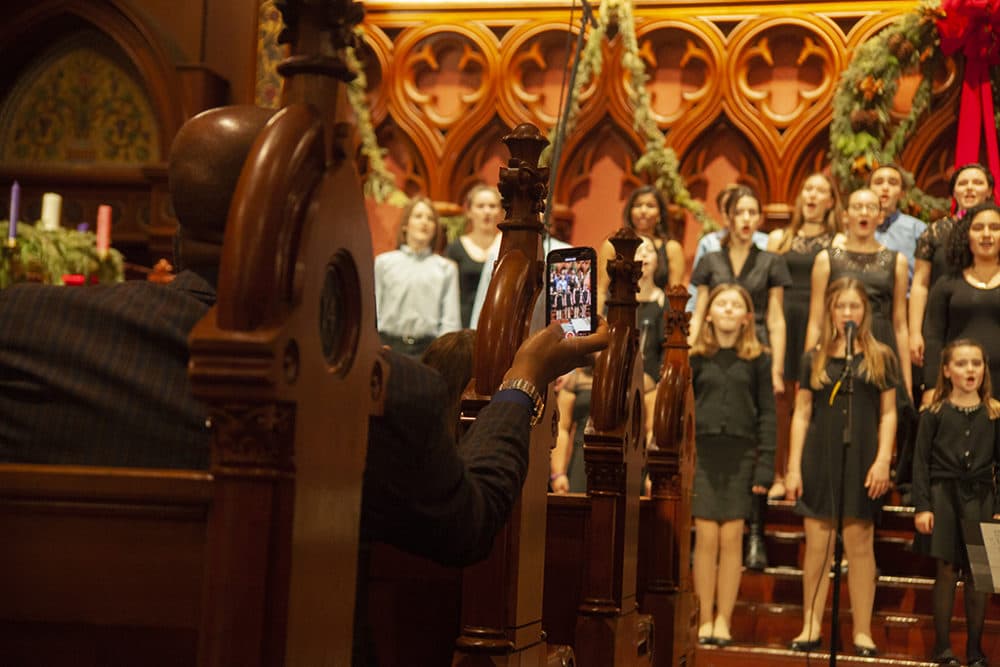
There's also the convening of audiences. The local theater scene continued to confront the fact that most of its patrons and critics are white, while an increasing number of black and brown artists are on stage. But we are also witnessing intentional efforts to convene audiences of color. When my colleague Arielle Gray attended a performance of SpeakEasy Stage and Front Porch Arts Collective's "Choir Boy" for #BlackOutBoston — a night explicitly marketed for Black folks — she wrote that the experience "felt like a jubilant, family reunion."
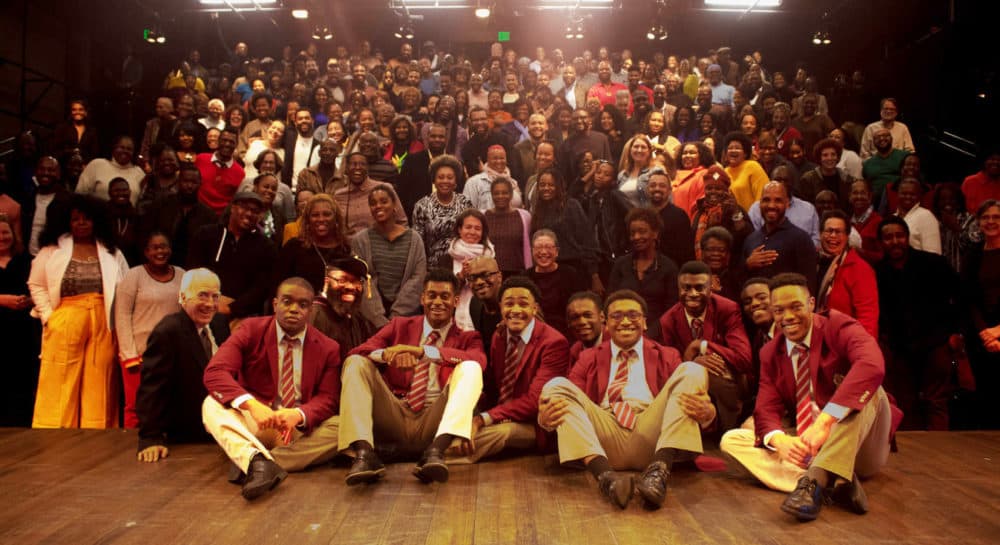
Then, there's the literal, physical spaces in which we convene. Artists themselves have had to deal with a competitive housing market that continuously shrinks the availability of affordable space to live and work. Green Street Studio, which provided affordable rehearsal and performance space for hundreds of dancers and artists for 28 years, shut its doors in October after they say they were priced out (though the city of Cambridge appears to be brokering a solution). Haley House closed its café for nearly the whole year as it reevaluated its business model — prompting many to think of just how few explicitly queer POC spaces there are in Boston to convene safely and openly.
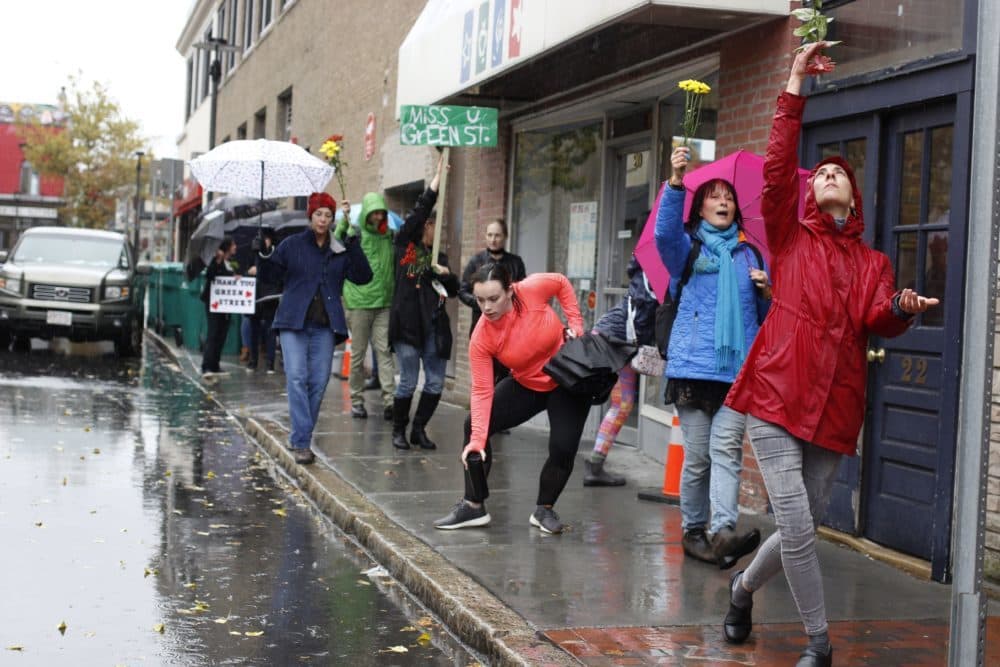
The Boston Center for the Arts is reevaluating its artist residency program so that it can more serve a greater number of artists on a rotating basis. The plan calls for the longtime artists at the BCA to vacate their below-market rate rented studios. These issues are not new. We know what a scarce commodity affordable artistic space is in Boston. And yet, this year, these stories really put into sharp focus the dearth of places for people to practice creativity in community.
The act of convening is not new in Boston or in art, but it felt like there was a hunger for it in 2019. We are all searching for a space, physical and not, to experience something profound with others, something that reminds us that we are not grappling with the big questions alone. There are others seeking too — solace, friendship, an escape, a challenge, new ideas. And sometimes, as communities, we come to collective reckonings. It's through art — and the fellowship that blossoms because of it — that we're able to look at old dilemmas in original ways. That's the power of creativity. It blooms when we convene.
